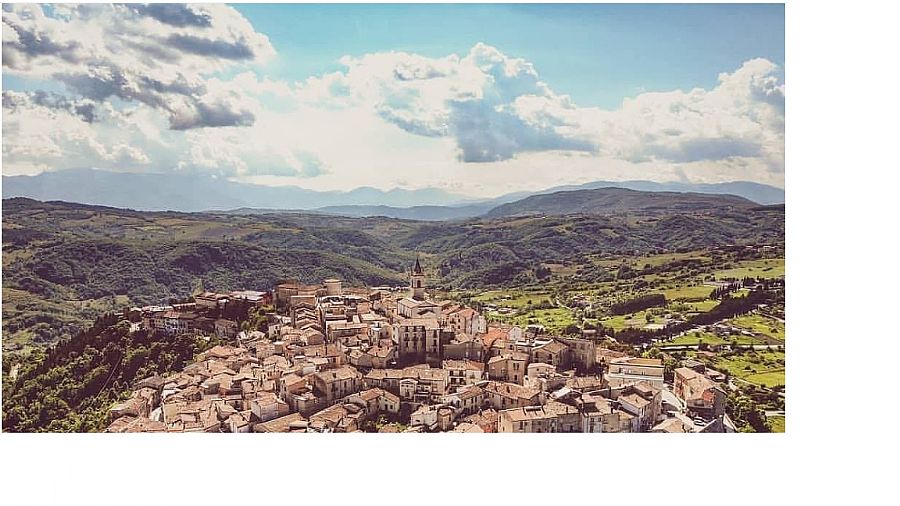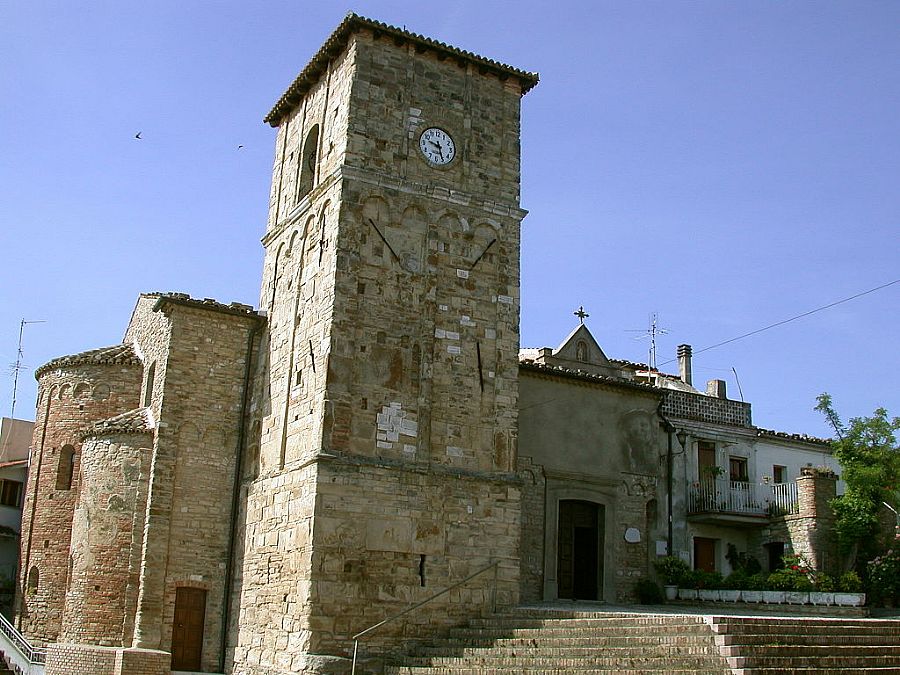Molise

Molise is known as "the region that doesn't exist" because so few people know about it -and because while it has ancient roots, it only became a region in 1970. For many centuries before that, it was part of was Abruzzi (then plural) to designate the area. Molise is one of those places where in most towns, time seems to stand still, traditions are clung to tightly, where people aren't necessarily used to tourists but friendly and happy to see them, and where you won't find crowds.
The region wtih only two provinces seems small but is heavily mountainous and so getting around can be a challenge, though if you're prone to wander, it's an ideal location because those mountain roads will take you to time-worn hill towns, mountain-top castles and abbeys, Roman ruins, and spectacular landscapes. It has some hills that produce wine and oil, and a stretch of coastline on the Adriatic Sea, so a little something for everyone. The two provinces (and cities where the provincial seats are located) are Isernia and Campobasso. Isernia is the more "internal," or some may central, province - it abuts Abruzzo, Lazio and Campania regions. Campobasso is also internal, its primary city sitting in the hills surrounded by mountains and hills that then give way to the Adriatric Sea to the east. It is the largest city with 49,000 residents. In all, the region holds less than 306,000 inhabitants. That means you'll find hamlets and villages where things seem not to have changed (except for high speed internet and fancy drinks at the bars now!) The food in the region is also unchanged by time, keeping the area's recipes alive and well, with hearty mountain fare, plump pastas with meaty or legume-based sauces, and seafood as you get closer to the Adriatic. The fare is similar to Abruzzo in many ways and yet also distinct, and can change from town to town, so be sure to ask what the specialty dish is! The wines are also distinct and largely unknown outside the region - Biferno (a blend of montepulciano, aglianico and trebbiano); Molise DOC (red blend or white blend), Pentro DOC from trebbiano and bombino bianco; and Tintillia, an ancient single-grape varietal that is quite rare and prized.
Because it is so unknown, the region gets little tourism except intrepid Italians and mostly northern Europeans who love trekking, mountaineering, hang gliding and climbing. Others love horse riding, or just exploring the landscapes, seascapes, villages, castles and ancient sites, truly a joy of discovery where you may be the among the very few visitors there. A few places that are on the "must see" list follow, but there are countless towns, castles and sights, not to mention unspoiled nature, worth exploring!
ISERNIA PROVINCE
One of the province's best-known towns, apart from its primary provincial city itself, is Agnone (pronounced ahn-YO-neh.) It is well-known for its perfectly-cast bells that are used in churches up and down Italy (and beyond). The Marinelli foundry has been in business here since 1339 and is still in the same family! Amazing! They can create different tones and notes, so a visit to the museum and foundry is a must. The pretty quartiere Veneziano is also a must see while in town.
Isernia was a Roman town and still bears loads of testimony to its roots, so a walk around brings you to the Roman gates, the fountain, statuary, and the archeological site below the city's cathedral, among other sights. The town has pretty pastel-painted buildings, palazzi with cloistered courtyards (including the town hall that used to be a monastery), compact but pretty piazzas where you can sit outside with a drink or a snack and soak in the ambiance, and the outstanding art in the church of Santi Cosma e Damiano. Many places have excavations where you can see the old Roman remains below the current street level so keep your eyes open for those.
The Sepino Archeological Park holds columns of an ancient temple intact, roads, archways and an amphitheater from the Roman age.
Abbey of San Vincenzo al Volturno - between Castel San Vincenzo e di Rocchetta a Volturno, the Benedictine monastery complex is hidden away along the Capo Volturno River not far from the Abruzzo and Lazio borders. The monastic complex is still a convent, and has archways of an ancient wall through which you first glimpse the Romanesque church. Next to it is the Abbey's palazzo. The sisters provide hospitality in the form of simple lodgings and meals at the complex. Nearby are the beautiful waterfalls, Cascate del Volturno. If you're up for a hike, the hidden hermitage of San Michele a Foce can be reached by paths.
CAMBOBASSO PROVINCE
Mountains and outdoors activities are actively sought out here, but the province also takes in Molise's Adriatic coastline, so there is something for everyone.
The city of Campobasso. At 700 meters, it rests in the hills with airy breezes from the nearby mountains. The medieval old town seems to wrap around the hill and the very top holds the ancient castle, twisty lanes, and stair-stepped streets, a veritable maze -and exciting to explore.There are many churches, like San Giorgio with its frescoes, Sant'Antonio Abate with its high decorative altar piece, and mysterious Santa Maria della Croce, ancient seat of the Crusades. The "modern" city is graceful and offers public gardens, palazzi, piazzas, a neo-classical cathedral, the Liberty-style Teatro Savoia for shows, and the opulent Villa de Capoa. There are museums and no lack of great dining venues, wine bars, outdoor cafes, and overlooks.
Civitacampomarano is a mouthful - and also a jaw-dropper, because the town is brimming with beautiful murals everywhere you walk. There is also a castle, olive groves, natural beauty and loads of little but charming hill towns all around.
Pietrabbonante is a village of just 600 souls, abbutting a huge rock (as the name implies - abundant rock!) At more than 1000 meters ( feet) high, it's hardly on the normal tourist track, yet it is a wealth of history, with ancient Sannitic fortifications, who predated the Romans, along with their ancient theater and temple. Oh, add in the walls and necropolis and the archeological complex is completely fascinating.
San Vincenzo al Volturno is a Benedictine abbey with ancient archways through which you get your first view of the historic abbey itself. The complex, alongside the river Capo Volturno, includes the Romanesque church with its rose window and side-saddle bell tower, monastery (still in use). The ancient basilica has Byzantine frescoes and an archeological site. The sisters of the convent offer hospitality in the form of basic lodgings and meals. Nearby are the cascate del Volturno (waterfalls), the medieval borgos of San Vincenzo and Rocchetta Alta. If you're up for a hike, a path leads to the hillside hermitage of San Michele a Foce. In this area you are near the borders of Abruzzo and Lazio.
Petacciato may be small but it is called the "balcony of the Adriatic" and has lovely overlooks and views. Its views take in the Tremiti Islands, the surrounding hills. With Gothic, Byzantine and Lombard history, it is also fascinating and somewhat mysterious, so a joy to wander the old streets. Its territory also takes in 7 kilometers of coastline with fine golden sand beaches.
Termoli is the primary seaside city of the region, called the "pearl of the Molise coast" with its old town center combining with newer beach resort amenities for a nice blend. You'll find a colorful harbor, a castle dating back to Frederick II, the magnificent Piazza del Duomo with its Romanesque cathedral, Termoli underground, a trip back in time. Although, honestly, just walking around the old town is a trip back in time with its narrow lanes, archways, small squares, surprising overlooks and streets that double back. The walkway called la passarella dei trabocchi is a pathway below the walls that lets you see the ancient watch towers as well as the old-time wooden fishing platforms called trabocchi. Or, walk up above in town, Viale Federico II basically encircles the outer part of the old town, from the castle, with stunning sea views all the way around. The town sprawls out from the centro storico and has 33,000 residents, so there is no lack of restaurants, cafes, wine bars, and gelaterias (along with shops and services). You can rent a boat or hire one to take you around the coast, or catch a ferry to the Tremiti islands.
Molise is known as "the region that doesn't exist" because so few people know about it -and because while it has ancient roots, it only became a region in 1970.
Petacciato is a village in the hills of Molise, called "the balcony on the Adriatic" for its views over the hills to the sea.
Browse carefully selected vacation home rentals in Molise.

 Amalfi Coast
Amalfi Coast Sorrento Coast
Sorrento Coast Tuscany
Tuscany Cilento National Park
Cilento National Park Lake Como
Lake Como Rome and Latium
Rome and Latium Umbria
Umbria Capri and Ischia
Capri and Ischia Venice
Venice Puglia (Apulia)
Puglia (Apulia) Liguria
Liguria Sicily
Sicily Lake Maggiore
Lake Maggiore Lombardy
Lombardy Sardinia
Sardinia Lake Garda
Lake Garda Abruzzo and Marche
Abruzzo and Marche Calabria
Calabria